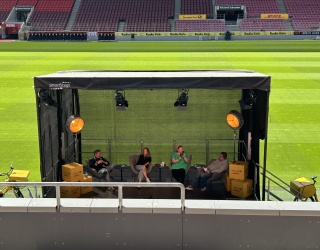
Household spending on clothing, supplies, computers and electronics for children in grades K- 12 is expected to reach nearly $28 billion this year, according to Deloitte's annual "Back-to-School" survey.
Parents surveyed say they'll spend an average of $510 between July and September, with most of that occurring in stores ($292) – more than double the amount they plan to spend online ($115), which accounts for nearly one-quarter (23 percent) of their spending.
Respondents remain undecided where they'll put the remaining 20 percent of their budget – leaving $5.5 billion up for grabs between online and store retailers. Additionally, the amount parents say their children influence accounts for $21 billion, or 75 percent of back-to-school dollars.
"The amount people plan to spend and tendency to shop in physical stores for back-to-school are consistent with last year, but retailers need to act fast for that $5.5 billion wild card," said Rod Sides, vice chairman, Deloitte LLP, and U.S. Retail, Wholesale and Distribution leader. "In just one year, previously undecided dollars have shifted dramatically by product category. For example, in 2017, 30 percent of people said they hadn't decided if they would purchase computers online or in-store and that number shrunk to 20 percent this year, most of it going online. In electronics, undecided spending dropped 10 percentage points, moving primarily into the stores."
The No.1 shopping destination remains mass merchants, drawing 83 percent of survey respondents. Other price-based retailers like dollar (38 percent), online-only (36 percent) and off-price stores (32 percent) follow, continuing to squeeze more traditional retailers out of the higher ranks. For example, off-price stores jumped from No.14 in 2016 to No.4 this year, while department stores fell from the No.2 position in 2016 to No.6 in the last two years of the survey.
While people plan to visit price-based retailers more frequently, those who shop at traditional retailers like department stores, home electronics and office supply stores make larger purchases at these locations compared with other venues like mass merchants.
"Back-to-school shopping tends to be price-focused as parents look for promotions and mass merchants for the best deals," added Sides. "But when we look below the surface, we notice several distinctions between high and low-income households and the way people shop for specific items like clothing, technology, and supplies. The potential lesson for retailers is that back-to-school may require them to do more than compete on price alone or try to sell across all categories. Survey results show it may be about delivering the best product or experience to customers in specific categories."
Parents' reliance on tools like laptops and social media may have hit a digital saturation point. Among respondents, 49 percent plan to use their desktop or laptop to shop, down from 57 percent last year. Mobile use increased to 53 percent after trailing desktop/laptop use in 2017. Parents' social media use also appears to be decreasing, with 23 percent saying they plan to use these tools to find promotions, receive coupons and browse products, down from 27 percent in 2017 and 32 percent in 2016.
"When we look deeper into these findings, customers seem to be waiting for the next wave of digital experience to attract and entertain them," added Sides. "That suggests that retailers' next assignment for back-to-school shoppers is to make the online and mobile interactions more exciting and meaningful."
Back-to-school shopping is expected to peak during late July and early August, and those who begin their shopping before August are expected to spend 20 percent more than late starters. Nearly 7 in 10 (68 percent) of shoppers tend to finish their back-to-school shopping within a four-week period, but those who extend their shopping timeframe (sometimes in search of deals) spend more overall.









